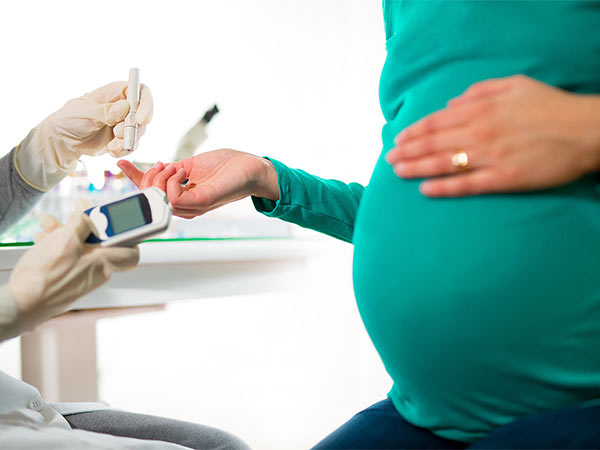Warm temperatures can lead to misdiagnosis of diabetes in pregnancy
Environmental temperatures of over 25 degrees are associated with a significant increase in the risk of being misdiagnosed with gestational diabetes during pregnancy, data published in the European Journal of Endocrinology suggests. Misdiagnosis of the condition could lead to unnecessary insulin treatment and avoidable distress for prospective mothers.

Gestational diabetes mellitus (GDM) affects approximately 1 in 20 pregnant women, and occurs when the pancreas cannot produce enough insulin to compensate for an increase in blood sugars, caused by pregnancy hormones. GDM, which usually develops during the last three months of pregnancy, can be dangerous for both the mother and the unborn baby if not appropriately managed. It can result in large babies that lead to labour difficulties, and negative health effects for the newborn, including low blood sugar levels, jaundice, and respiratory problems. In some cases, it can lead to miscarriage or stillbirth. Current GDM tests measure the mother’s sugar levels before taking a sugary drink (fasting blood sugar levels) and after the sugary drink (non-fasting blood sugar levels). If either of these values is above a certain level, GDM may be diagnosed.
Given its associated complications, there is a need to diagnose and manage GDM appropriately. Previous observational studies noted that there are more GDM cases reported in the summer, suggesting that GDM may be seasonal, but also that misdiagnosis but also that misdiagnosis could be more likely during this time of year. This could result in over or underdiagnosis of the condition, and subsequent negative outcomes for expecting mothers and babies. Until now, no studies have investigated the impact of temperature on GDM diagnosis.
To determine the specific impact of environmental temperature in GDM diagnosis, researchers from the Alexandra Hospital, Greece, examined retrospective data of over 7,500 pregnant women who had undertaken a GDM test at varying times of the year. They found that, during summer, average non-fasting blood sugar values were higher compared to winter, while fasting sugar levels were not – independently of age, gestational age, BMI, weight gained during pregnancy, and blood pressure. This led to a 70% higher rate of GDM diagnosis. The researchers then showed, in a smaller group, that non-fasting blood sugar levels were twice as likely to be considered high at temperatures of over 25 degrees.
“Our findings suggest the need to take into consideration environmental temperature during interpretation of test results used to diagnosed GDM”, states Dr Eleni Anastasiou, who led the study. “We hypothesise that the seasonal changes observed may be due to an increase in blood flow that may diminish sugar extraction from blood to tissue”.
In future research, Dr Anastasiou’s group will focus on identifying improved screening tools during and after pregnancy in GDM patients, and carry out randomised controlled trials to investigate new insulin regimens for these patients.
“Better screening should ensure that pregnant women are properly diagnosed for GDM, ensuring they receive treatment only when their blood sugar levels can pose a danger for themselves and the baby, and avoiding unnecessary treatment and distress during pregnancy”, Dr Anastasiou adds.
Source: European Society of Endocrinology
Full bibliographic information:
The impact of environmental temperature on the diagnosis of gestational diabetes
Eur J Endocrinol

